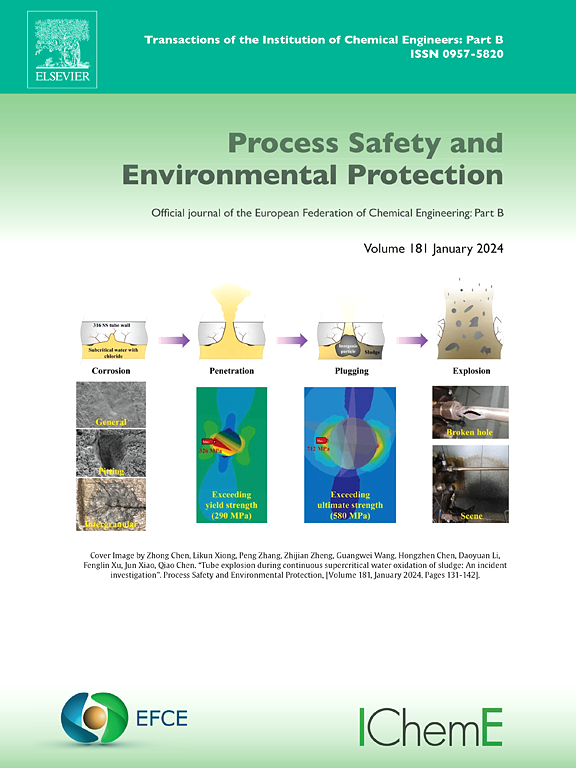Low-cost crosslinked PVA membranes as alternative proton exchange membrane in hemodialysis wastewater fed bioelectrochemical fuel cells
IF 6.9
2区 环境科学与生态学
Q1 ENGINEERING, CHEMICAL
引用次数: 0
Abstract
Hemodialysis (HD) is a highly water and electricity-consuming process. Untreated hemodialysis wastewater (HDWW) has high chemical oxygen demand when discharged at a temperature of 20–25 °C. It causes significant wastage of thermal energy posing a challenge in achieving zero liquid discharge (ZLD). Microbial Fuel Cells (MFCs) offers a ground-breaking solution for reusing HDWW, thereby reducing the carbon footprint of HD. However, MFCs are practically limited by cost of Nafion 117. In this study, Polyvinyl Alcohol (PVA) previously used in HD for the effective removal of creatinine and larger molecular weight pollutants, is utilized as Nafion-alternative proton exchange membrane by crosslinking PVA with 5 % glutaraldehyde to harvest bioelectricity from HDWW fed MFCs. The crosslinked PVA membrane achieved a remarkable power density of 320 mW/m² due to its low ohmic resistance of 68.97 Ω, as confirmed by EIS analysis. Additionally, the membrane cost is reduced by eight-fold compared to Nafion-117, making it economically feasible. Moreover, PVA's manufacturing process, which uses water as a solvent, requires no catalyst, and involves zero activation steps, is eco-friendly. Reutilizing HDWW with crosslinked PVA membrane in MFCs advances ZLD in HD by harnessing low-grade heat and generating bioelectricity, thus significantly reducing dialysis waste and its ecological impact.
求助全文
约1分钟内获得全文
求助全文
来源期刊

Process Safety and Environmental Protection
环境科学-工程:化工
CiteScore
11.40
自引率
15.40%
发文量
929
审稿时长
8.0 months
期刊介绍:
The Process Safety and Environmental Protection (PSEP) journal is a leading international publication that focuses on the publication of high-quality, original research papers in the field of engineering, specifically those related to the safety of industrial processes and environmental protection. The journal encourages submissions that present new developments in safety and environmental aspects, particularly those that show how research findings can be applied in process engineering design and practice.
PSEP is particularly interested in research that brings fresh perspectives to established engineering principles, identifies unsolved problems, or suggests directions for future research. The journal also values contributions that push the boundaries of traditional engineering and welcomes multidisciplinary papers.
PSEP's articles are abstracted and indexed by a range of databases and services, which helps to ensure that the journal's research is accessible and recognized in the academic and professional communities. These databases include ANTE, Chemical Abstracts, Chemical Hazards in Industry, Current Contents, Elsevier Engineering Information database, Pascal Francis, Web of Science, Scopus, Engineering Information Database EnCompass LIT (Elsevier), and INSPEC. This wide coverage facilitates the dissemination of the journal's content to a global audience interested in process safety and environmental engineering.
 求助内容:
求助内容: 应助结果提醒方式:
应助结果提醒方式:


